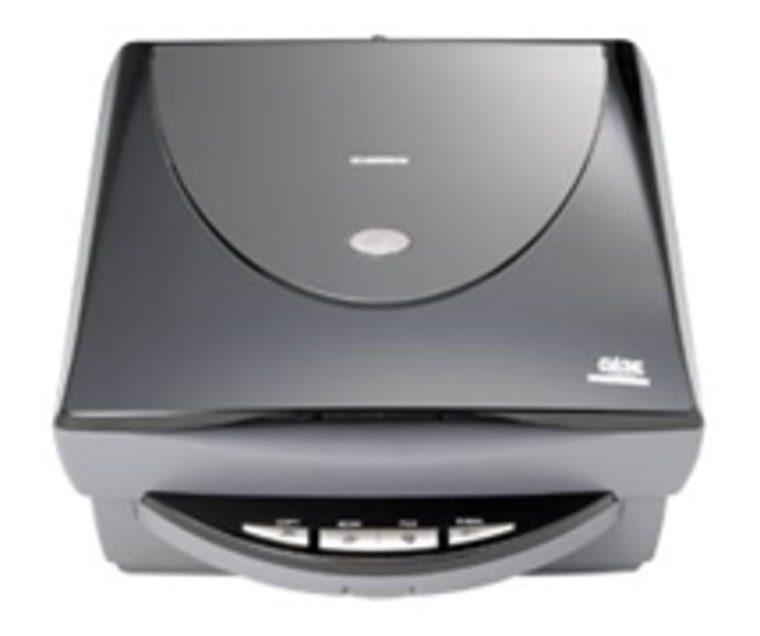If shoeboxes crammed with forgotten images clutter your basement, a photo scanner may be the answer to your spring cleaning blues. Scanners function like a copy machine, but instead of spitting out a paper copy, they digitize photographs, slides, negatives and other records for computer storage.
Remember baby's cake-smudged smile at age one? Or the huge sand castle you built on spring break in Florida? What about the 1976 Halloween party where you dressed like stuntman Evel Knievel? With the images digitized, a trip down memory lane only requires a few mouse clicks.
Most scanners come with proprietary photo-editing software, often bundled with third-party products such as Adobe Photoshop Elements (about a $100 value). Use it to enhance and organize your images; even put that cake-smudged smile picture on the invitation to "baby's" 40th birthday party.
Less than $150 buys a flatbed scanner capable of the photo digitizing task, according to Ron Glaz, an analyst with the market research firm International Data Corporation in Framingham, Massachusetts. One word of caution: "The whole process is very time consuming," he said. These relatively inexpensive flatbeds can scan four standard-size prints at once, but the task requires about four minutes. Scanning a box crammed with a thousand photos can eat up several otherwise picture-perfect days.
"A lot of people have the intention from the start of going through [the archiving] process but it's so time consuming they say let's just do the important pictures, the ones we need now," Glaz said.
According to Glaz, scanning speeds increase slightly as prices go up, but the extra dollars mostly purchase higher quality lenses, mirrors, sensors and software that make for clearer images.
Key feature to consider
Resolution is the main feature to consider when shopping for a scanner. It is measured in pixels (dots) per inch (dpi). While 300 dpi is sufficient for most photographs, at least 2700 dpi is required to enlarge slides and negatives for an 8 x 10-inch print, Glaz said. Many photo-equipped scanners on the market today scan at least at 3,200 dpi.

A popular flatbed scanner is the Epson Perfection 3490 Photo ($100). It has a 3,200 dpi optical resolution and a built-in adapter for slides and negatives. Included software restores faded and dusty images to reveal yesteryear's splendor. Serious enthusiasts may want to check out the line's 4990 Pro model ($600). It can scan up to 24 negatives at once and includes a sophisticated software bundle for photo restoration and editing tasks.
Canon's CanScan 8400F ($150) is another relatively inexpensive photo, slide and film scanner sufficient for an amateur's needs. It has 3,200 dpi optical resolution and included re-touching technology gets rid of dust and scratches that commonly blight older slides and negatives. The higher end 9950 model ($400) can handle up to 30 negative frames at once, which is helpful when digitizing a shutterbug's vast collection.
A similar range of flatbed scanners is available from well known and trusted vendors Hewlett-Packard and Microtek.
Shutterbugs with boxes and boxes of slides or negatives may prefer a dedicated film scanner instead of the adapters required for most flatbeds. Options include the Nikon Super CoolScan 5000 ED ($1,000), which is advertised to be capable of 20-second scans at 4,000 dpi. While 20 seconds is quick, a stack of 3,000 slides will still take more than 16 hours to scan. An optional slide or film feeder (about $450) will help ease the burden by allowing scans of up to 50 slides or 40 negative frames automatically before re-loading.
All-in-one products
A third option is the all-in-one printer, copier, fax and scanner. These devices are now more common than stand-alone scanners, according to a recent survey from the market research firm InfoTrends . "In general, they have the features that people are looking for and the results have been found to be OK," said Jonathan Franke, a consultant with the firm.
Photo enthusiasts looking to clear desktop clutter, as well as image clutter, might consider the Epson Stylus Photo RX700 ($400). It can digitize all image media and scans at 3,200 dpi.
